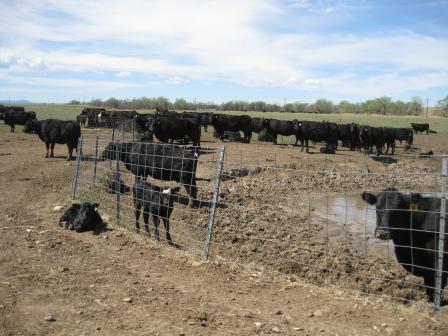Superfund Sites in Reuse in South Dakota
If you are having trouble viewing the map in your browser, click the 'View larger map' link below
Ellsworth Air Force Base
The 4,858-acre Ellsworth Air Force Base (EAFB) Superfund site is an active military base located in Meade County and Pennington County, South Dakota. The base includes runways, airfields, munitions storage, industrial facilities, recreational fields and residential housing. Military and industrial processes contaminated the site with hazardous substances such as solvents and jet fuels. The EPA added the site to the National Priorities List (NPL) in 1990. The U.S. Air Force, the EPA, and the State of South Dakota worked as partners to clean up EAFB. Cleanup activities included ground water pumping and treatment, installation of landfill caps, soil excavation and natural attenuation of contaminated soil. The U.S. Air Force also ended use of on-site wells and now relies solely on the municipal water supply. Remedy construction reached completion in 1999 and site monitoring continues. The EAFB remained an active military base for the 28th Bombardment Wing (B-1B bombers) throughout the cleanup process. In addition, on-site renewable energy projects, such as a solar panel array and geothermal energy systems, generate up to 38 kilowatts of power for the EAFB.
For more information:
Whitewood Creek
 Whitewood CreekThe Whitewood Creek Superfund site covers an 18-mile stretch of Whitewood Creek in Lawrence, Meade and Butte Counties, South Dakota. Since the 1870s, area gold mining operations included the discharge of millions of tons of mine tailings into Whitewood Creek. These mine tailings contaminated soil, groundwater and surface water. EPA added the site to the Superfund program’s National Priorities List (NPL) in 1983. The potentially responsible party, Homestake Mining Company, cleaned up the site by removing and replacing 4,500 cubic yards of contaminated soil from 16 residential yards. EPA deleted the site from the NPL in 1996. About 83 percent of the site remains native woodlands. The creek currently serves as a water source for irrigation, livestock and recreation. Residents along Whitewood Creek continue to raise livestock and crops for livestock feed on the site as they have for more than 40 years. The banks of the creek are now re-vegetated and portions of the site are able to support local reuse as ranchland. Local residents also use the creek for recreational purposes.
Whitewood CreekThe Whitewood Creek Superfund site covers an 18-mile stretch of Whitewood Creek in Lawrence, Meade and Butte Counties, South Dakota. Since the 1870s, area gold mining operations included the discharge of millions of tons of mine tailings into Whitewood Creek. These mine tailings contaminated soil, groundwater and surface water. EPA added the site to the Superfund program’s National Priorities List (NPL) in 1983. The potentially responsible party, Homestake Mining Company, cleaned up the site by removing and replacing 4,500 cubic yards of contaminated soil from 16 residential yards. EPA deleted the site from the NPL in 1996. About 83 percent of the site remains native woodlands. The creek currently serves as a water source for irrigation, livestock and recreation. Residents along Whitewood Creek continue to raise livestock and crops for livestock feed on the site as they have for more than 40 years. The banks of the creek are now re-vegetated and portions of the site are able to support local reuse as ranchland. Local residents also use the creek for recreational purposes.
For more information:
Williams Pipe Line Co. Disposal Pit
The 52-acre Williams Pipe Line Co. Disposal Pit Superfund site is located in Sioux Falls, South Dakota. The Great Lakes Pipeline company constructed a facility at the site and began operations in the early 1940s. Bulk quantities of liquid fertilizers as well as petroleum products were stored and conveyed at the facility including fuel oil, diesel fuel, unleaded gasoline, aviation gasoline and jet fuel. Tanks and pipe racks moved petroleum fuel to the loading racks where delivery vehicles were filled. Constructed in 1945, a burn pond on site collected stormwater runnoff, which was often contaminated with spilled materials from various areas of the site. Until 1987, site operators periodically burned off petroleum products that accumulated on the pond. In 1966, Williams Pipe Line Company purchased the site. An unlined disposal pit on the site accepted liquid fertilizers and the site housed fuel tanks for delivery trucks until 1988. EPA added the site to the Superfund program’s National Priorities List (NPL) in 1990. Cleanup activities included capturing contaminated water and monitoring groundwater. After meeting cleanup goals, EPA deleted the site from the NPL in 1999. The site property remains in continued industrial use. The Williams Pipe Line Terminal (now Magellan Pipeline Company) houses 42 aboveground petroleum storage tanks, a fuel loading area, garages and an administration building on site.
For more information:
